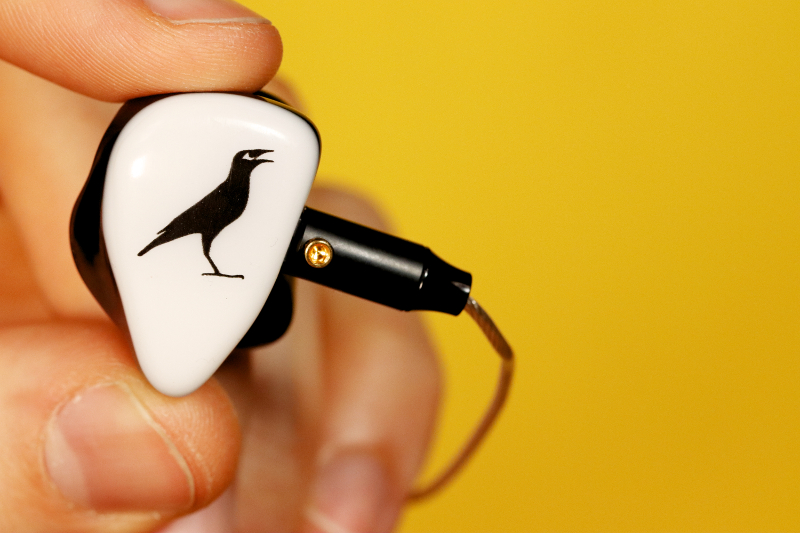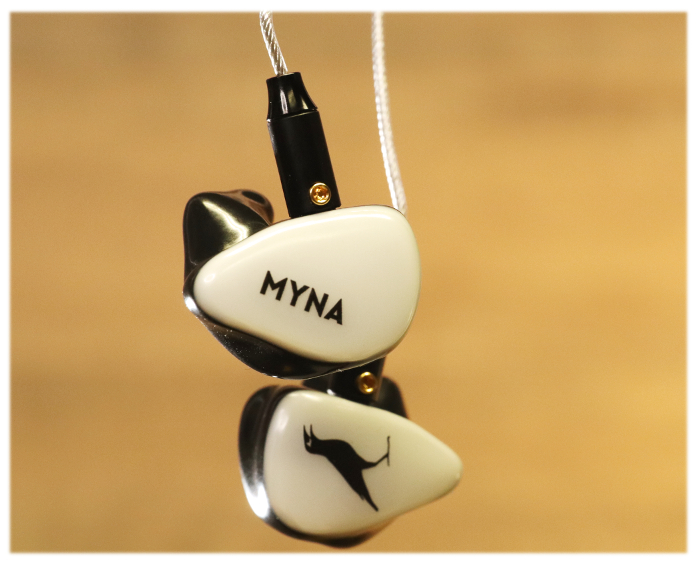
Myna in-ear monitors (IEMs) are developed and engineered in collaboration with Trew Audio, an industry leader in providing equipment to production sound professionals. Myna IEMs are made, assembled, and tested in the USA at our lab in Nashville, Tennessee. Myna has partnered with other leaders in the industry to include world-class components such as Knowles Electronics drivers and PlusSound cables.
The Myna lab uses precision acoustic sampling equipment with an artificial pinna to analyze the sound character of specific headphone models at the point where the sound enters the second bend of the canal, near the eardrum. This is the point at which the sound must be duplicated for IEMs to mimic a particular headphone model.
Myna IEMs
Myna custom-molded in-ear monitors (IEMs), designed for production sound professionals, are engineered to mimic the sound characteristics of the Sony 7506 headphones, as well as the Beyer 770 headphones. Additional Myna models are in development to mimic other popular industry-standard headphones.
An industry first, Myna IEMs mimic specific headphone models so that, when changing back and forth from Myna IEMs to the headphone model they mimic, the sound quality is virtually the same. Myna IEMs provide the acoustic isolation and versatility of hand-crafted in-ear monitors while allowing the user to keep their point of reference.
When using standard headphones in a very loud environment, it can be difficult to tell the difference between audio from the microphones and sound leaking through the headphones.
This makes it difficult to know what is actually being recorded. With Myna custom molded IEMs, if you hear it, you are hearing it from the microphone. And it works the other way too. If you don’t hear the airplane overhead that everyone else is concerned about, you can let the director know with confidence that it’s not a problem.
IEMs are also very useful when working in windy conditions or on a moving vehicle. The wind blowing onto standard headphones can sound exactly like the dreaded sound of wind on the microphone. Custom molded IEMs don’t have wind noise, so if you hear wind, you know it’s being recorded.
Hearing Protection & Acoustic Isolation
A very important reason for using custom molded IEMs for location sound is the extreme acoustic isolation. This means IEMs can not only give you better monitoring but can help protect your hearing. Myna IEMs are custom molded to fit your ears, creating a perfect seal from outside noise. Because IEMs block outside noise, they allow you to monitor at lower levels than you might with regular headphones.
Keep Your Reference
Before Myna, IEMs were primarily designed to meet the needs of stage musicians for live performances. Some models are made to emphasize specific instruments; bass players might prefer more low-end, guitar players usually prefer more midrange, and vocalists might want more “sizzle,” etc. But until now, no IEMs have been made to duplicate the sound of a specific headphone monitor.
Versatile Cables & Connectors
The Myna IEM development team realizes that production sound professionals have unique cable and connector needs. For example, most IEMs terminate only to an 1/8-inch plug. However, location sound pros need to be able to go back and forth between devices with 1/4-inch and 1/8-inch stereo connectors. Therefore Myna cables terminate to an 1/8-inch connector that includes a 1/4-inch screw-on adapter for added versatility. In addition, knowing that production sound mixers often need cables longer than the standard 4-foot length to reach their carts, a 2-foot breakaway extension is included with the Myna Premium and Elite models.
Most IEM brands use molded-on connectors that need to be replaced if damaged. Knowing the hard life that production sound equipment experiences, Myna has partnered with PlusSound to pair each IEM model with industry-leading rugged Exo and X Series cables with field-serviceable connectors.
Each pair of Myna IEMs begins with physical impressions of the customer’s ears to guarantee a precise fit. Customers can use our list of recommended licensed audiologists to schedule an appointment for ear impressions in their area. After the ear impressions are received at the Myna lab, they are scanned, digitized, and imported into our modeling software. This allows our highly skilled technicians to fine-tune the surface of each impression.
The scans are sent to a resin printer, which produces a very smooth and exact shell of the original impressions. The shell is then fitted with an array of drivers, acoustic dampers, and crossover components chosen to match the performance profile of the customer’s chosen model. Each pair of Myna IEMs are analyzed and tested to certify that they meet the standards for the selected model. A final coat of hypoallergenic lacquer is applied, which is then hand-polished to a beautiful glass-like finish with a comfortable, airtight seal.
To accommodate location sound professionals, Myna IEMs are crafted from the same type of hypoallergenic medical-grade resin required for hearing aids to prevent skin irritation from long hours of constant use. Each set of Myna IEMs is also hand polished for a smooth and precise fit to prevent “hot spots” from long periods of use. These are important distinctions from other IEM brands that are designed for musicians. While it is common for stage musicians to wear their IEMs for two or three hours a day, film and video production sound crews typically wear their headphones or IEMs for 10 or more hours each day.
The build quality of Myna IEMs is superb, using industry-leading Knowles Electronics drivers and professional-grade Exo and X Series PlusSound cables and connectors. Designed with the professional in mind, Myna cables and connectors can be disassembled for servicing. The cable terminates to a 1/8” stereo plug and includes a 1/4” screw-on adapter.

Another reason production sound professionals are adding IEMs to their kits is that they often find themselves in settings that are problematic for regular headphones. Recording on location often means being in nature’s elements, requiring sun or rain hats that interfere with headphones. Construction hardhats are required for certain locations, and military operations might require helmets, which also make headphone use impractical. Myna IEMs allow sound professionals to wear any protective headgear with ease.

